
















The Ohio State University Department of Neurology has had another extraordinary year, marked by transformative growth, groundbreaking achievements, and a steadfast commitment to excellence. In 2024, we celebrated a historic milestone with 81 faculty members across 15 dynamic disciplines, including pioneering fields such as Neuropalliative Care, Neurogenetics, and the world’s first Neurology Health Services Research division.
Today, we stand at the forefront of neurological care in the United States — not only as leaders in clinical productivity but also as innovators in research and personalized approaches to managing neurological disorders. At the heart of our mission lies a relentless dedication to exceptional, patient-centered care. Our 27 multidisciplinary “one-stop shop” specialty clinics continue to set the gold standard for holistic, highly expert neurological care. Meanwhile, our 30-hospital telestroke network and rapidly expanding teleneurology program, which provides virtual inpatient consultations for diverse neurological conditions beyond stroke to six regional spoke hospitals, extend critical, cutting-edge diagnostic and clinical management services across the state of Ohio.
In 2024, our faculty conducted over 350 clinical trials and studies — a testament to our commitment to advancing the boundaries of neurological therapeutics. Additionally, our 14 state-of-the-art wet bench laboratories are enhancing our understanding of the pathogenesis of a spectrum of neurological disorders, discovering biomarkers, and identifying new therapeutic targets. Since FY19, these efforts have resulted in an impressive quadrupling of federal extramural funding.
This year, Ohio State Neurology and Neurosurgery ranked among the top 1.8% nationally on the U.S. News & World Report Reputation and Expert Opinion list. Twenty of our neurologists, across 10 subspecialties, were recognized on the prestigious Castle Connolly Top Doctors list, and our Neurology residency program
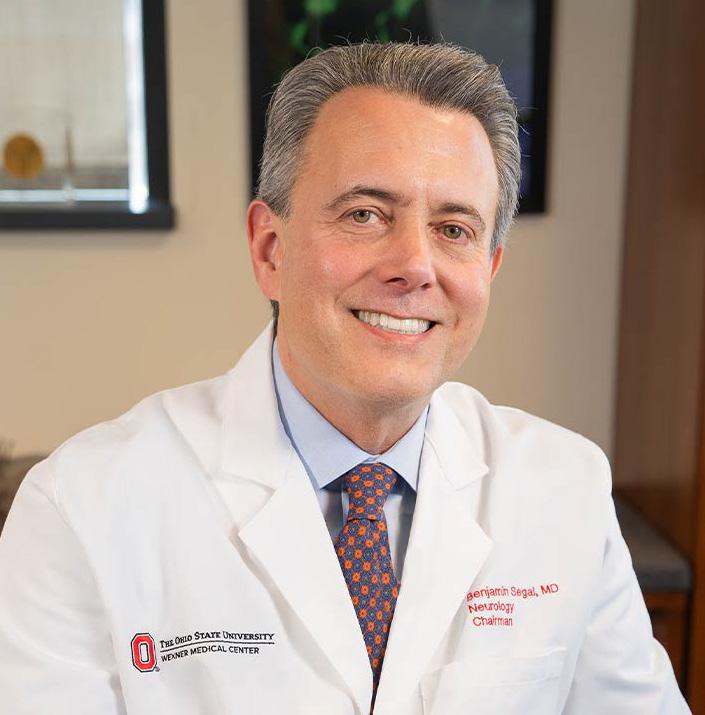
Benjamin Segal, MD Department of Neurology Chair
earned a top-five ranking in the Midwest, according to Doximity Residency Navigator. Our Global Neurology program continues to expand its international impact, building transformative partnerships with academic centers in Ethiopia, Saudi Arabia and beyond — creating unparalleled opportunities for collaborative research, education, and global knowledge exchange.
As we look to the future, I am confident that the momentum of 2024 will propel us even further — toward new heights in neurological care, scientific discovery, and education. With every patient we serve, every discovery we make, and every future neurologist and investigator we train, we are working together to redefine the future of neurology. The path ahead has never been brighter — and we are just getting started. Go Bucks!
5 new divisions since FY20 for a total of 15
62K outpatient arrived appointments
$15.6M in extramural research funding
81 faculty members across 15 disciplines
27 multidisciplinary specialty clinics
1.2K Brain Bank and Biorepository subject enrollments
23 residents
30 telestroke partnerships
350 clinical trials in FY24
10 clinical fellowships
8 ambulatory sites
14 wet bench laboratories
Dedicated to multidisciplinary collaboration, our goal is to accurately diagnose, treat and improve the lives of individuals with neurological diseases, while increasing our understanding of the causes of neurological disease and discovering more effective treatments.
Our national and international visibility continues to soar. In 2024, Ohio State Neurology ranked in the top 1.8% on the U.S. News & World Report Reputation and Expert Opinion list. Our residency program earned a top-five ranking in the Midwest on Doximity Residency Navigator.
Top Neurology Residency Programs in the Midwest Doximity Residency Navigator

Ohio State University Hospital
Columbus
Positions available per cycle: 24
Cleveland Clinic Foundation Cleveland
Positions available per cycle: 48
Mayo Clinic College of Medicine and Science (Rochester) Rochester, MN
Positions available per cycle: 33
University of Michigan Ann Arbor, MI
Positions available per cycle: 27
Washington University/8-JH/SLCH Consortium St. Louis
Positions available per cycle: 44
U.S. News & World Report Reputation and Expert Opinion

Castle Connolly, considered by clinicians and patients as the source to find top doctors in their specialties, has recognized 20 neurologists across 10 subspecialties in Ohio State’s Wexner Medical Center.













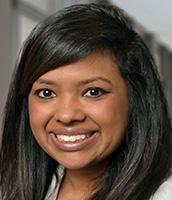





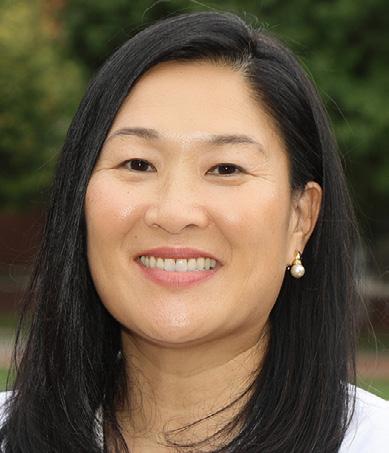
The Department of Neurology at Ohio State’s Wexner Medical Center continues to receive national recognition, with the recent designation of a Parkinson’s Foundation Comprehensive Care Center, bringing its total Centers of Excellence to seven.

The department is honored to be part of the Parkinson’s Foundation Global Care Network, which unites academic institutions world wide to provide high-quality, clinical care for people with Parkinson’s disease. We have also been designated as a Parkinson’s Foundation Center of Excellence, placing us among the highest-tier institutions that lead the field in Parkinson’s research, and a Parkinson’s Foundation Comprehensive Care Center, in recognition of our expert multidsciplinary clinic model.
“This prestigious recognition ensures that our research and clinical care aligns with the latest best practices and evidence-based guidelines. It also enables us to provide essential education and support for patient communities, empowering individuals and their families with
knowledge, resources and strategies to better manage their condition,” said Ariane Park, MD, MPH.
The department also hosts Center of Excellence designations from the Muscular Dystrophy Association, Lewy Body Dementia Assocation, National Multiple Sclerosis Society and Huntington’s Disease Society of America. The department’s Epilepsy Center continues to maintain its prestigious Level 4 designation, while the Comprehensive Stroke Center has, for yet another year, received accolades from the American Heart Association for its exceptional performance. This includes being named on the AHA Get with the Guidelines 2024 Gold Plus: Target Stroke Honor Roll Elite and the Target: Type II Diabetes Honor Roll.
The Department of Neurology’s Global Neurology Initiative now encompasses two key partnerships. The relationship with Addis Ababa University in Ethiopia is in its second year, while the relationship with King Faisal Specialist Hospital and Research Centre (KFSHRC) was forged in 2024.
These partnerships offer residents the rare opportunity to engage in regular case conferences with our peers. These collaborative sessions promote cross-cultural dialogue, enriching their understanding of how neurological diseases differ in incidence, perception and presentation across diverse geographic regions and cultural contexts.
In the past year, the Ohio State Global Neurology Initiative strengthened its existing relationship with the Addis Ababa University Neurology Residency Program. “Our partnership with the Addis Ababa University Neurology Residency Program continued as we shared educational experiences through combined case conferences and planned a neurology board review course for Addis Ababa residents that was led by Ohio State’s neurology faculty,” said Bakri Elsheikh, MD, director of the Ohio State Global Neurology Initiative.
In October 2024, a team of investigators from Ohio State’s Department of Neurology traveled to Riyadh, Saudi Arabia, to collaborate with colleagues at King Faisal Specialist Hospital and Research Centre (KFSHRC). The visit included a “Frontiers in Neuroscience” symposium showcasing the Department of Neurology’s latest discoveries, as well as brainstorming sessions on potential collaborations in clinical care, research and education. Ohio State faculty also engaged with leaders from the Saudi National Institutes of Health, the Saudi Health Commission, and the Ministry of Health to explore shared goals and opportunities for partnerships.
Dr. Najeeb Qadi, Director of the Neuroscience Centre at KFSHRC, emphasized Ohio State’s leadership in translational research and expressed enthusiasm for formalizing a memorandum of understanding with Ohio State to further collaborative efforts.
A highlight of the trip was a televised “fireside chat” during the Global Health Exhibition, featuring Drs.
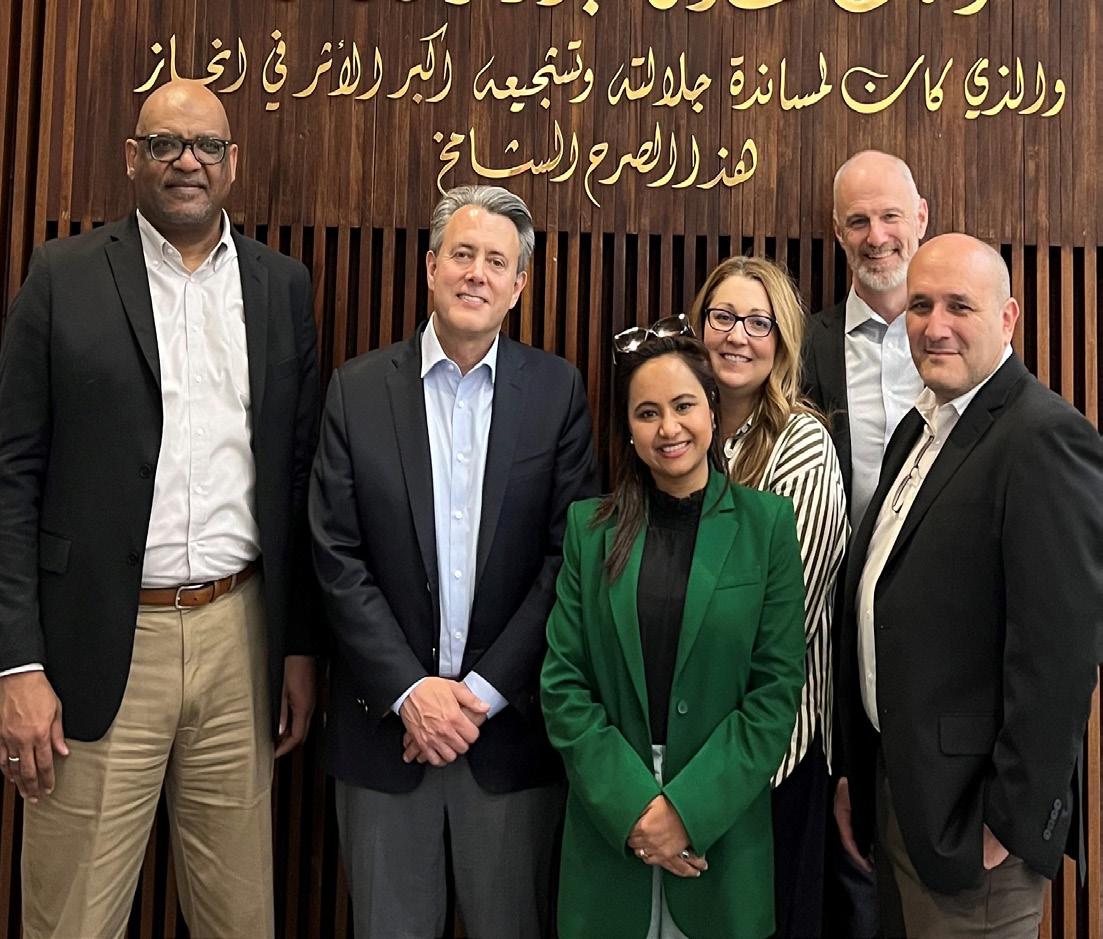
Segal and Kolb discussing strategies to build a culture of scholarship in neurology. The exhibition, held at the Riyadh Exhibition and Convention Center, drew over 100,000 registrants.
“The recent trip to King Faisal Specialist Hospital in Riyadh was highly productive, creating new opportunities for collaboration and furthering our global neurology mission,” added Dr. Elsheikh.
This sentiment was echoed by KFSHRC Executive Director of Research and Innovation Edward Cupler, MD.
“While KFSHRC has a long history of partnering with top U.S. academic medical centers, the rapid and successful transformation demonstrated by Ohio State is unique and highly desirable for advancing KFSHRC’s mission,” Cupler said. Plans are underway to create interinstitutional visting scholars and research partnership programs, and to implement Ohio State’s Translational Neurology Research Course at KFSHRC.
Our clinical reach continues to break records, making Ohio State Neurology one of the most prolific departments in the nation.
In FY24, Ohio State Neurology delivered care through over 62,000 outpatient visits at seven ambulatory sites in central Ohio — a remarkable 16.4% increase from FY23.
Neurology outpatient volume by year (FY21 to FY24)
Telestroke network continues to scale
Ohio State Neurology’s telestroke network, which is now connected to 30 partner hospitals, handled 5,500 calls — an 18% rise from FY23.
Annual telestroke volume (FY21 to FY24)
Teleneurology network growth
More than 1,200 virtual consultations for acute neurological conditions beyond stroke were conducted by the department’s cutting-edge teleneurology network. This network is revolutionizing inpatient care at six regional spoke hospitals across the state of Ohio.
Teleneurology growth by year (FY21 to FY24)
Telecognitive program expands reach
The department’s expanding Telecognitive program brings critical neurocognitive evaluations to underserved rural communities and is poised to reach new sites this year. It also offers patients opportunities to participate in clinical research in mild cognitive impairment through Alzheimer’s disease.
Neurology care at University Health System continues to increase
Inpatient neurology consults at Ohio State’s University and East Hospitals have surged by 30% since FY19, reflecting the ever-growing local demand for our specialized expertise.
Our clinical growth is poised to reach even greater heights with the imminent opening of a state-of-the-art bed tower featuring a 30-bed neurointensive care unit, a 30-bed stroke ward, and a 10-bed epilepsy monitoring unit, alongside a new ambulatory center in Powell. These milestones underscore our steadfast commitment to providing world-class care, closer to home.


Our network of 27 multidisciplinary “one-stop shop” symptom management and neurology specialty clinics continues to set the standard for highly expert, holistic and patient-centered care in the field, with an average of two to three new clinics introduced annually since 2019. Later this year we will launch four additional clinics, bringing our total to 31.
Each clinic is supported by a dedicated team of professionals who are deeply attuned to the unique challenges, exacerbating factors, and lifestyle implications that patients face. This approach ensures that every patient receives personalized care, tailored to their specific needs. Depending on the patient population
served, our multidisciplinary teams may include subspecialty-trained physical, occupational, and speech therapists, nutritionists, pharmacists, neuropsychologists, psychotherapists, genetic counselors, respiratory therapists, sleep medicine and fatigue experts, and/or social workers, all working with the lead neurologist.

We are committed to continuing to place an emphasis on holistic, patient-focused care and look forward to pioneering various subspecialty clinical opportunities in the future.”
SARITA MATURU, DO
Together, they deliver comprehensive care tailored to each patient, while streamlining communication across medical teams to provide an optimal experience. Currently, we offer multidisciplinary clinics in ALS, multiple sclerosis, Huntington’s disease, young-onset dementia, ataxia/cerebellar disorders, myositis, and muscular dystrophies, with plans to expand further. Spanning nine unique divisions within Neurology, our customized specialty clinics reflect the breadth and diversity of the populations we serve.
“These clinics allow for more specialized, innovative care to patients, create an atmosphere of collaboration for providers through our multidisciplinary approach, and provide unique opportunities for participation in research trials,” said Sarita Maturu, DO. “We are committed to continuing to place an emphasis on holistic patient-focused care and look forward to pioneering various subspecialty clinical opportunities in the future.”
New subspecialty clinics provide cutting-edge patient care
The most recent additions to our innovative clinic portfolio this year include the Autoimmune Mediated
Neuropathy Clinic, the Multidisciplinary Cerebellar Symptom Management Clinic, the Sleep Disorders in Stroke Clinic, and the Headache Pregnancy Clinic. These clinics underscore our commitment to expanding access and delivering cutting-edge care to patients with complex and challenging neurological conditions.
In the year ahead, we are excited to unveil the Surgical Treatments in Movement Disorders (STIM) Evaluation Clinic, which will revolutionize the pre-surgical experience for Parkinson’s patients qualifying for Deep Brain Stimulation. In just 48 hours, patients will undergo a comprehensive pre-surgical workup that includes consultations with movement disorder specialists, neurosurgeons, and genetic counselors; required lab work; advanced MRI imaging; and neuropsychological testing, all in one streamlined visit.
“We hope the STIM clinic will not only streamline access to advanced therapies and enhance patient satisfaction but also create new opportunities for individuals traveling long distances — offering options to those with Parkinson’s disease who might otherwise be unable to pursue these life-changing treatments for their disabling symptoms,” said Zach Jordan, MD.
Over 90% of survey respondents would enthusiastically recommend the multidiscipinary and specialty clinics of the Department of Neurology at Ohio State’s Wexner Medical Center to others.
Designed specifically for individuals over 65 living with MS, this clinic provides a holistic approach to care that combines neuroimmunology and geriatrics expertise. The team provides careful management of diseasemodifying therapies and symptomatic medications, with a focus on minimizing side effects and addressing drug interactions that are more common in older adults. Beyond medication management, the clinic emphasizes comprehensive assessments of frailty, age-related sarcopenia, and fall risk, proactively implementing strategies to preserve well-being and optimize functionality. The care team includes advanced practice providers, nutritionists, rehabilitation specialists, MS-specialty pharmacists, and social workers, all working collaboratively to address the unique challenges faced by older adults with MS.
Established in collaboration with the James Comprehensive Cancer Center, this clinic serves individuals experiencing peripheral neuropathy as a result of cancer treatment. Patients benefit from a team of neuromuscular specialists, rehabilitation providers, and pharmacists who offer a full spectrum of care. On-site services, such as same-day skin biopsies for diagnostic confirmation, and access to cutting-edge clinical trials and research programs, further enhance the patient experience.
“Looking ahead to 2025, we aim to make a broader impact on our patients by embedding research into standard care, which will enhance data collection and increase participation for effective discovery,” noted Grace Shin, PhD.

Led by our Movement Disorders and Epilepsy divisions, respectively, these clinics are staffed by licensed social workers who provide tailored cognitive behavioral therapy, addressing both the mental and physical aspects of these disorders. This holistic approach supports overall well-being and helps patients manage the unique challenges associated with functional movement disorders and psychogenic non-epileptic events.
Our Epilepsy, Neuroimmunology and Headache divisions offer specialized care to patients of childbearing potential, ensuring individualized treatment during pregnancy and the postpartum period. Issues such as the impact of medications on fertility, fetal health and breastfeeding are addressed. These clinics are orchestrated in partnership with Maternal and Fetal Medicine.

A relentless pursuit of excellence in comprehensive patient care is at the core of Neurology at Ohio State’s Wexner Medical Center.
Our dedication to patient-centered care is reflected in the overwhelmingly positive feedback we receive. Post-visit surveys reveal that an overwhelming majority of patients feel their quality of care has significantly improved through Neurology’s clinics, praising the organization and effectiveness of the multidisciplinary approach. Over 90% of survey respondents would enthusiastically recommend these services to others. One patient shared, “Seeing existing providers and new providers was a nice balance,” while another remarked on the thoroughness of their exams and appreciated that they “did not feel rushed.”
Moreover, these programs are deeply integrated with our research mission. All patients are invited to participate in our robust Biorepository program and granted access to groundbreaking clinical studies and trials. This synergy between patient care and research ensures that every individual benefits from the latest advancements while contributing to the future of neurological science.
This transformative model of care continues to grow and flourish under the visionary leadership of
Dr. Sarita Maturu, Medical Director of Neurology Specialty Clinics, along with the tireless dedication of our providers and administrative staff. Together, we remain steadfast in our commitment to delivering exceptional, personalized care that empowers our patients and transforms lives.
On the inpatient side, we expanded the Neurological Complications of Immunotherapy consultation service, delivering cutting-edge care for patients facing complex conditions such as CAR T-cell encephalopathy, autoimmune disorders linked to checkpoint inhibitors, and demyelinating diseases associated with TNF antagonists. These innovative programs not only tackle the most challenging neurological conditions with precision and compassion but also serve as a national model for personalized, multidisciplinary care in neurology.
Dr. Trisham Gyang noted, “Our neurology specialists work closely with the hematology/oncology specialists in optimizing clinical care for patients with immune cell-associated neurotoxicity syndrome and neurological immune-related adverse events.”
In just five short years, the Department of Neurology at The Ohio State University has experienced unparalleled growth, expanding from 47 individuals in FY18 to 81 in FY25.
Among the most striking achievements is the dramatic increase in tenure-track faculty, rising from four to 15, and the exponential growth in NIH-funded investigators, surging from two to 13. These numbers tell a story of excellence in both academic and research domains. Of the 35 exceptional faculty members who have joined us during this time, 14 lead cutting-edge wet bench laboratory programs, while three are trailblazing health services research investigations focused on advancing neurological care and improving outcomes.
This wave of new talent spans all 10 of our established divisions and introduces five new divisions:
• Neuropsychology & Cognitive Well-Being
• Neurohospitalist Medicine & Teleneurology
• Neurology Health Services Research
• Neurogenetics
• Neuropalliative
These new divisions represent the bold and forwardthinking direction our department is taking to lead the way in the evolving landscape of Neurology.

Ohio State makes you feel like you can do anything and the possibilities are endless.”
HERA KAMDAR, MD
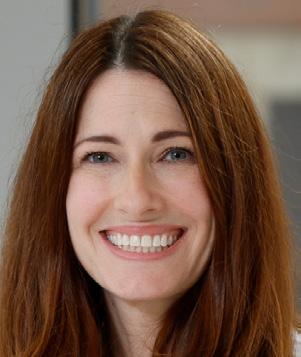


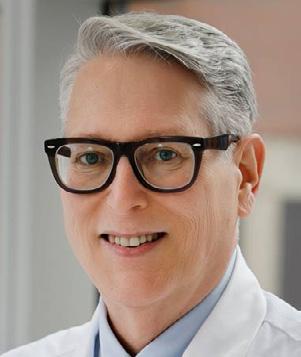


















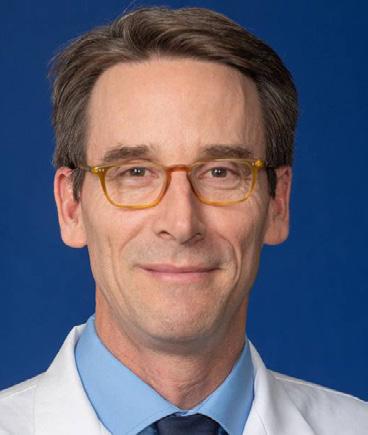

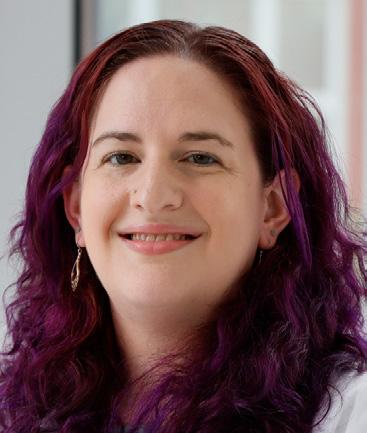


Leadership has flourished in tandem with this growth. Since 2019 we have appointed new division chiefs in pivotal areas such as Epilepsy, Multiple Sclerosis, Movement Disorders, Neuropsychology & Cognitive Well-Being, Neurohospitalist Medicine & Teleneurology, Neurology Health Services Research, and Neurogenetics. Further strengthening our leadership team, Dr. Kevin Kerber was named Vice Chair of Clinical Operations, Dr. Ariane Park assumed the role of Vice Chair of Faculty Affairs, and Dr. Elyse Everett was appointed Vice Chair of Diversity, Equity, and Inclusion. Dr. Yasushi Kisanuki, Director of the Residency Program, was joined this year by Drs. Elyse Everett and Hera Kamdar as Associate Directors. These visionary leaders have cultivated a culture of excellence and efficiency, driving unparalleled achievement through exceptional financial stewardship, groundbreaking clinical expansion, enlightened educational programs and transformative research advancements — ushering in the most dynamic period in the department’s history.
As previously mentioned, this year, we were thrilled

to welcome Dr. Elyse Everett, our first neuropalliative care physician and Associate Residency Director, who joined the faculty in July 2024. In FY25, we are proud to add a distinguished cohort of faculty who are already making substantial contributions in their respective fields: Alex Morrison and William Everett (Neuromuscular Disorders), Jorge Morales (Stroke), Andrew Jerome (Neuroimmunology), Manisha Sawhney (Neuropsychology & Cognitive Well-Being), and Hamid Mohtashami (Neuro-Oncology). These exceptional individuals are part of a broader wave of talent, following 15 new faculty members across nine divisions who joined us in FY24, all contributing to the growing expertise of our department. This unprecedented expansion reflects not just growth in numbers but a transformation in scope, expertise and innovation. As we continue to attract world-class talent and build upon our strong foundation, Ohio State Neurology is positioned to lead the charge in delivering high-quality care, conducting transformative research, and educating the next generation of neurologists and neurology researchers.
The Department of Neurology is leading the field in clinical excellence, compassionate care, and cutting-edge research that is advancing treatment and evidence-based practices.”
BENJAMIN SEGAL, MD
In parallel with our clinical advancements, the research enterprise at Ohio State Neurology has flourished. In 2024, our faculty conducted over 350 clinical trials and studies overseen by 42 principal investigators and facilitated by 41 clinical research support staff across nine divisions.
These trials include innovative gene therapies in Alzheimer’s disease and multiple system atrophy, Bruton’s tyrosine kinase inhibitors in progressive MS, nipocalimab (FcRn blockers) and novel immunemodifying nanoparticles in myasthenia gravis (MG), and a CIC-1 chloride channel blocker in adults with type 3 spinal muscular atrophy. Trials of CAR T-cell therapy in MS and MG are under preparation.
Meanwhile, our 14 cutting-edge wet bench laboratories drove transformative discoveries that are shaping the future of neurological science, particularly in the identification of novel biomarkers, therapeutic targets and treatment innovations.
The department achieved an extraordinary milestone, securing $15.6 million in extramural funding in FY24, with the number of federal NIH and DOD grants quadrupling over the past five years — a testament to the strength and creativity of our research programs.
During FY24, our faculty’s groundbreaking work was featured in some of the most prestigious peer-reviewed journals, including Lancet Neurology, Cell, Nature Immunology, Nature Neuroscience, and Science Translational Medicine. Among the highlights, our investigators made pivotal discoveries including:
• Developing a novel method to generate neuroprotective and pro-regenerative immune cells from human, as well as mouse, bone marrow stem cells. When administered near optic nerve or spinal cord injury sites, these unique cells stimulate axon regeneration and significantly enhance the survival of damaged nerve cells in the central nervous system. (Nat Immunol. 2024 Jun;25(6):957-968. doi: 10.1038/ s41590-024-01836-7; PMID: 38811815).
• Uncovering the role of glucocorticoid signaling in lesion-level-dependent systemic muscle wasting following spinal cord injury. This finding could ultimately lead to interventions that minimize muscle loss in the aftermath of spinal cord damage. (Sci Transl Med. 2023 Dec 20;15(727):eadh2156. doi: 10.1126/ scitranslmed.adh2156; PMID: 38117902).
• Defining lysosome dysfunction as a key factor in the pathophysiology of Parkinson’s disease (PD). The insights revealed by this study introduce novel therapeutic approaches for PD. (Biochem Soc Trans. 2024 Aug 28;52(4):1909-1919. doi: 10.1042/ BST20240087; PMID 39083004).
• Exploring the expression of Alzheimer’s disease risk-modifying genes in microglia and astrocytes, offering new insights into Alzheimer’s pathogenesis and identifying new candidate therapeutic targets (medRxiv. 2024 Apr 22:2024.04.19.24306098. doi 10.1101/2024.04.19.24306098. PMID:38699303).

We are especially proud of our commitment to nurture the next generation of scientific leaders. Among the nine junior faculty with a primary focus on research, an astounding seven have earned prestigious NIH or DOD career development awards, a reflection of our dedication to fostering talent and advancing scientific excellence.
Established in 2023 under the leadership of Luke Hammond, the Quantitative Imaging Platform is transforming neurological research at Ohio State. This cutting-edge resource provides access to advanced microscopes, computational tools, and deep learning techniques, enabling breakthroughs in understanding neurological diseases that were previously out of reach.
The platform features state-of-the-art equipment, including a spinning disk confocal microscope for live imaging, super-resolution imaging, and high-throughput analysis of cells and tissues. These unique tools empower researchers to tackle complex questions with precision and efficiency.
Currently, the platform supports a wide range of projects, from studying how axons regenerate and how neurons interact with the immune system to analyzing microglial shapes and conducting whole-brain imaging. These collaborations are creating reliable workflows that fuel innovative discoveries, strengthen grant proposals, and lead to impactful scientific publications.
Looking ahead, the platform aims to expand its capabilities even further. Plans include enabling researchers to image entire brains and spinal cords using advanced light sheet microscopy, observe cellular activity in real time with in vivo imaging, and analyze human nervous tissue.


Astrocytic endfeet and arborization over a brain capillary and surrounding microenvironment. (Subhodip Adhicary, PhD)
The Neurology Health Services Research (HSR) Division, established in January 2022, is the first of its kind in the country. Co-directed by Jim Burke, MD and Kevin Kerber, MD, the division is dedicated to optimizing health outcomes and the well-being of individuals with neurological symptoms and diseases.
Its research focuses on understanding determinants of health and health care delivery in neurology and developing, evaluating, and implementing interventions to improve the impact, efficiency and accessibility of neurological health care. Anna Lin, PhD, joined the faculty in April 2023, further bolstering the team. The division also includes analytic specialists Christos Deligkaris, PhD, and Ran Bi, PhD; postdoctoral fellows Amanda Gusovsky Chevalier, PhD, MPH, and Ra’ed Hailat, PhD; and project manager Rachel Ernst.


PROMPT (PeRsonalized Option-based Multi-specialty multi-Platform and Timely) Headache Study
The PROMPT Headache study has progressed from the intervention development phase and is nearing the formal evaluation stage. This project is a collaborative effort with Kevin Weber, MD, from the Headache Clinic, and Mike Dial, MD, from General Medicine. It involves the development of educational resources for patients with headaches and their providers, including a website and instructional video that focus on nonpharmacological interventions, over-the-counter medications, and lifestyle changes. The impact of these resources on headache management self-efficacy and clinic visit efficiencies will be assessed. This initiative is supported by an Ohio State Patient-Centered Innovation Award.
The NEUR-OH project represents another major milestone. This data-driven initiative aims to identify
gaps in neurologic diagnoses and high-value care delivery across Ohio with the ultimate goal of developing strategies to address disparities. By analyzing healthcare claims data, the team is creating statewide dashboards that highlight areas of possible under- or overdiagnosis and assess the quality of condition-specific treatments in cities and towns throughout the state. The insights gained will guide targeted community-based interventions developed in collaboration with academic, community, and hospital partners at Ohio State. The project is funded by a peer-reviewed competitive grant from Genentech.
Amanda Gusovsky Chevalier, PhD, MPH, recently published significant findings in the journal Neurology regarding out-of-pocket (OOP) costs for neurologic medications. Her analysis, based on Merative Marketscan data, revealed a 217% average annual



increase in OOP expenses for multiple sclerosis medications. Branded epilepsy medications exhibited higher costs than generics, while the introduction of generics to the marketplace led to significant cost reductions ranging from 48% to 80% for drugs like duloxetine, pregabalin, rasagiline, rivastigmine, and memantine. Two additional papers from this research are in progress, with one under revision and another nearing submission. Dr. Gusovsky Chevalier is also collaborating with Drs. Sarita Maturu (Epilepsy) and Seuli Brill (Internal Medicine) to study antiseizure medication adherence in women with epilepsy during preconception and early pregnancy. Their abstract was submitted to the annual American Academy of Neurology (AAN) meeting in October.
The HSR Division is thrilled to welcome Ra’ed Hailat, MD, PhD, as its newest team member. Dr. Hailat completed his training in Health Services Research and Epidemiology at Michigan State University, where he focused on stroke outcomes. His expertise in data linkage, predictive modeling, and registry-based datasets strengthens the division’s ability to explore both inpatient and outpatient neurological care. He joins a growing team of talented postdoctoral researchers.
The HSR Division actively engages Neurology residents and medical students in research to evaluate the value of neurologic care. Residents Nick Capaci and Andrew George, along with students Ankit Annapareddy and Ben Thompson, have contributed significantly to this effort, culminating in the submission of two abstracts to the AAN annual meeting which report about the types of services provided by neurologists at outpatient visits and the variation in these services by subspecialty. Medical student Jason Hirsch has been mentored on a project to assess the validity of stroke ICD-10 subcodes for stroke location. Hirsch presented his first manuscript at the 2024 International Stroke Conference comparing the ICD-10 subcodes to gold-standard review of imaging studies. He will also deliver an oral poster presentation at the 2025 International Stroke Conference on a subsequent study that reports stroke location in patients with nonspecific/unspecified ICD-10 stroke location, and also predictors of clinician use of specific vs. nonspecific/unspecified subcodes.
The HSR Division’s commitment to advancing health services research, fostering innovation, and mentoring the next generation of leaders in neurology continues to drive impactful contributions to the field.
Since its founding in 2019 the Neuroscience Research Institute (NRI) has built bridges between innovative translational neuroscience research and clinical implementation. NRI has also fostered education and professional development opportunities while creating an infrastructure for interdisciplinary collaboration. Here are a few highlights:
Affiliated research funding increased by about 35% year over year
Brain Bank and Biorepository continues to scale
Providing neuroscience education opportunities
The 2024 NRI Annual Retreat, held on November 15, was a resounding success underscoring the robust and expanding scope of the Ohio State research community dedicated to deepening our understanding of neurological diseases.
330+ Registrants
125 Abstracts
108 Poster presentations
Led by Dr. Erica Bell, our burgeoning brain bank and biorepository program has enrolled over 1,200 unique subjects, providing critical resources for translational neuroscience research.
Patient Enrollment by Division

Since the introduction of new residency leadership with Dr. Kisanuki assuming the role of Program Director in 2023, and Drs. Kamdar and Everett joining as Associate Program Directors in 2024, significant strides have been made to enhance the educational experience for our residents across multiple domains.
The PGY2 bootcamp has been expanded into a comprehensive week-long program that includes didactics, laboratory simulations of neurological emergencies, and hands-on neurologic exam training by a range of subspecialists, ensuring new PGY2s are well-prepared for the demands of their intense year. On the inpatient side, Dr. Kamdar has played a pivotal role in improving the Neurovascular service and Neurocritical Care Unit experience. She introduced the “Brain Bites” program in the NCCU to foster team relationships and help new residents acclimate to the service. Communication policies between residents and attendings have also been clarified to promote a more comfortable and efficient staffing environment.
On the outpatient side, substantial improvements have been made to subspecialty rotations, including dedicated
curricula for each rotation, as well as reading lists, case conferences, and self-examinations with boardstyle questions and answers. Dr. Everett has led efforts to enhance the continuity clinic experience, allowing residents to focus on their outpatient responsibilities while not on inpatient rotations. This also enables them to see a wide variety of patients and develop their personal clinic management skills.
In support of resident wellness, we have introduced the PGY4 wellness chief position. The wellness chief resident organizes monthly events such as pottery, tie-dye, yoga, and chair massages to promote relaxation and teambuilding. Additionally, the leadership team now holds quarterly town halls to review concerns and gather feedback on implemented or planned changes. Resident evaluations have been updated to enhance the quality
and quantity of feedback, and an anonymous reporting system has been established to ensure residents can voice concerns freely. To address workload and coverage needs, opportunities for extra shifts during holidays have been expanded, and additional initiatives are being implemented to improve weekend coverage for lumbar punctures.
Our recruitment process has been overhauled to attract top-tier future residents, allowing both departments and residents to actively participate in the process.
Diaz R, Balgord S, Klekowski N, Farthing AS, Escolero SG, DeCloux K, Burkhardt JC, Haggins AN, Hopson LR. Understanding clerkship experiences in emergency medicine and their potential influence on specialty selection: A qualitative study. AEM Educ Train. 2024 Feb 9;8(1):e10932. doi: 10.1002/aet2.10932. PMID: 38343629; PMCID: PMC10858322.
Salas JR, Jacob C, Ibekwe E, Zakeri AS, Nimjee SM, Strohm T. ROTEM and von Willebrand Factor in COVID patients presenting with acute ischemic stroke: A case series: ROTEM and von Willebrand Factor in COVID-19 Related Stroke. J Stroke Cerebrovasc Dis. 2024 Nov;33(11):107894.
Salas JR, Farrell A, Potts C, Robinson P. Longitudinally Extensive Transverse Myelitis in a Patient With Systemic Lupus Erythematosus, Recent Influenza Infection, and Nutritional Deficiencies in the Setting of Chronic Alcohol Use. Cureus. 2024 Jun 3;16(6):e61601. doi: 10.7759/ cureus.61601. PMID: 38962621; PMCID: PMC11221627.
Schichtel LT, Ibrahim R, Scoville N, Wagle B, Kalavar M, Yanoga F, Zhang X. Myelin Oligodendrocyte GlycoproteinAssociated Disease Optic Neuritis With Concurrent Combined Central Retinal Artery and Vein Occlusion. J Neuroophthalmol. 2024 Jun 24. doi: 10.1097/ WNO.0000000000002196. Epub ahead of print. PMID: 38913954.
Poster presentations
Ofek Avidor MD, Debolina Kanjilal MD, A. LeBron Paige MD, Jaysingh Singh MD. Time Course of Delays to Adult Epilepsy Surgery: A Single-center Experience. American Epilepsy Society Annual Meeting 2024. Los Angeles, CA. Dec. 6-Dec. 10, 2024. Poster Presentation.
Our residents continue to excel at the national level, exemplified by Dr. Aaron Corbin representing The Ohio State University in the American Medical Association National Leadership Program.
Additionally, our residents continue their outstanding achievements in academic excellence in their pursuit of scientific inquiry. Each resident chooses a research project that they can pursue during the course of their training under the supervision of a dedicated faculty mentor.
Luke Schichtel DO, James Burke MS MD, Kevin Kerber MS MD. Race Differences in Emergency Department Stroke Diagnostic Practices. 49th Annual International Stroke Conference 2025. Los Angeles, CA. Feb. 5-7, 2025. Poster Presentation.
Richa Sharma, MD, MPH; … Monica Sarkar, MD; … Adam de Havenon, MD. Recurrent stroke in patients with cryptogenic stroke and left ventricular injury: The Cardiac Abnormalities in Stroke Prevention and Recurrence (CASPR) study. Moderated poster presentation at the 49th Annual International Stroke Conference, Los Angeles, CA. February 2025.
It was another year of successful matches into fellowship programs, pursuing general neurology as well as a wide array of subspecialties at top institutions.
Sylvia Escolero, MD: Headache Medicine, The Ohio State University
Dan Fenn, MD, PhD: Movement Disorders, University of Florida
Abdul Gaffer Mohammed, MD: General Neurology
Amanda Lin, MD, MPH: Movement Disorders, University of Cincinnati
Jesus Salas, MS, DO: Multiple Sclerosis and Neuroimmunology, The Ohio State University
Monica Sarkar, MD: Vascular Neurology, University of Cincinnati
Luke Schichtel, DO: Vascular Neurology, Case Western Reserve University
Romi Xi, MD: Clinical Neurophysiology (EEG/Epilepsy Track), The Ohio State University